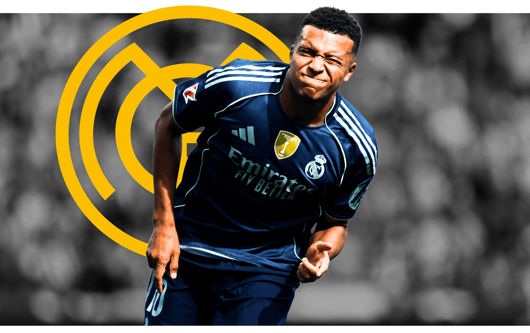-
News
- 24 Nov 2025
The five types of forwards as defined by data

All forwards may be tasked with putting the ball into the back of the net but there isn’t a football fan on this planet that thinks they all do it the exact same way.
As the sport of football has evolved into a quicker, harder and more expansive game, so too has the art of goalscoring. And as such, there have never been more varying types of forwards that populate the modern game.
With billions of pounds flowing through each division, as clubs desperately seek out the right kind of forward to make or break their season, it has never been more important to properly define each type of forward player and what exactly he is expected to do on the pitch.
Mobile Striker
The mobile striker is perhaps the most exciting and dynamic of the modern forwards, since he is often the player with the most pace and skill in any given team. These players are often tasked with exploiting the space behind the opposing defensive line and, when offered the chance, to take on defenders or goalkeepers in one-vs-one situations. The perfect example of this kind of player would be Lionel Messi or Kylian Mbappe. Both players are outstanding, technical talents that can run at pace beyond or simply through any defensive line by using all of their skill and speed.
Poacher
Although the term “poacher” may seem old-fashioned, the ability to score goals through excellent timing, positioning in the box and the technical talent to finish any move has never been more important in football. These players are often naturally selfish on the ball and thrive when they are offered the opportunity to take advantage of some space in the box behind an unsuspecting defender. Some clear examples of the modern day poacher would be Chelsea striker Olivier Giroud.

Pressing Forward
Sometimes a striker needs to be the first line of his team’s defence and in the modern game a number of teams rely on their forwards to do as much marking, closing down and pressing as a traditional defender. As such, the pressing forward is a player that hounds defensive lines into misplacing passes and, when afforded possession, can hold off towering central defenders to link-up with his midfielders. Perfect example of a modern pressing forward would be Diego Costa or Richarlison.
Shadow Striker
Finding space is one of the most important part of any forward’s job on the football pitch and when it comes to the shadow striker their main task is to exploit any gaps between the opposing team’s midfield and defensive lines. These players must be capable of passing the ball with speed and precision, as well as finishing chances whether they be from five yards out or 20 yards out. Perhaps the most obvious example of this is Bayern Munich forward Thomas Muller, who is nicknamed in Germany as Raumdeuter or “the interpreter of space”.
Target Man
Possibly the most obvious of the different types of forwards in the modern game. A target man is primarily tasked with holding the ball well under pressure from opposing players, laying it off to his teammates in better positions and being an excellent headerer of the ball at set-pieces and when the ball is swung into the box. Roma’s Edin Dzeko or Inter Milan’s Romelu Lukaku probably fit the bill for this type of player perfectly.



















